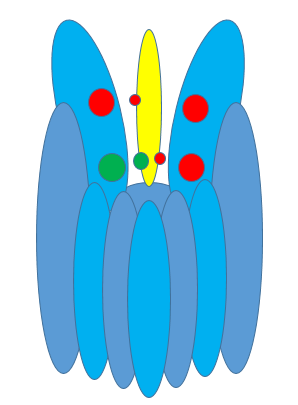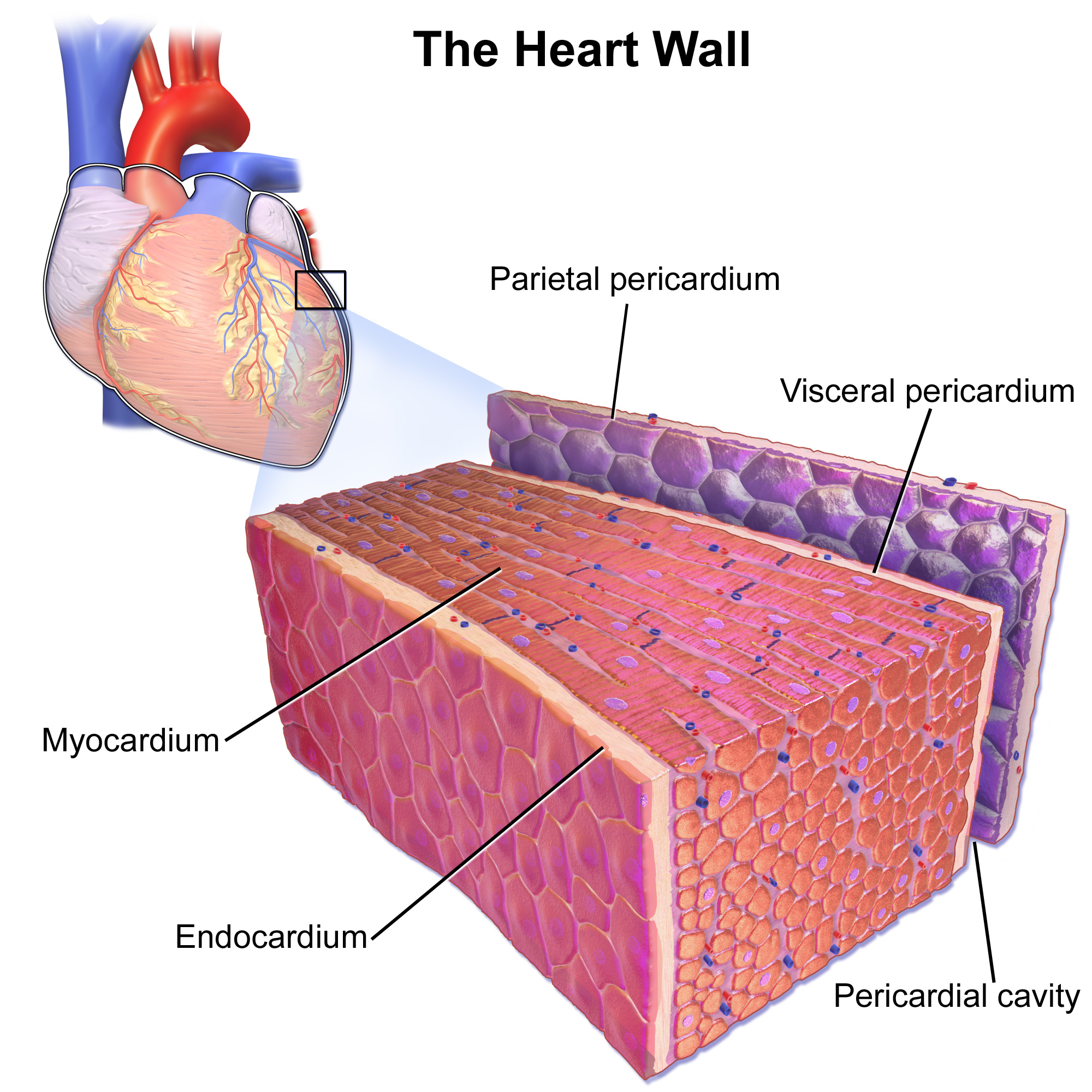|
Cutamesine
Cutamesine (SA 4503) is a synthetic sigma receptor agonist which is selective for the ''σ''1 receptor, a chaperone protein mainly found in the endoplasmic reticulum of cells in the central nervous system. These ''σ''1 receptors play a key role in the modulation of Ca2+ release and apoptosis. Cutamesine's activation of the ''σ''1 receptor is tied to a variety of physiological phenomena in the CNS, including activation of dopamine-releasing neurons and repression of the MAPK/ERK pathway. Structure The molecular formula for cutamesine is C23H32N2O2. This particular agonist is a piperazine, meaning that its core functional group is a six-membered heterocycle with two oppositely-placed nitrogen atoms. Two phenalkyl groups act as substituents for the two nitrogen atoms. The phenethyl group has methoxy groups on the 3 and 4 locations of the aromatic ring, while the phenpropyl group has no additional functional groups attached. Affinity Causes of Affinity The 3,4-methoxy groups ... [...More Info...] [...Related Items...] OR: [Wikipedia] [Google] [Baidu] |
Sigma-1 Receptor
The sigma-1 receptor (σ1R), one of two sigma receptor subtypes, is a Chaperone (protein), chaperone protein at the endoplasmic reticulum (ER) that modulates calcium signaling through the IP3 receptor. In humans, the σ1 receptor is encoded by the ''SIGMAR1'' gene. The σ1 receptor is a transmembrane protein expressed in many different tissue types. It is particularly concentrated in certain regions of the central nervous system. It has been implicated in several phenomena, including cardiovascular function, schizophrenia, clinical depression, the effects of cocaine abuse, bipolar disorder, and cancer. Much is known about the binding affinity of hundreds of synthetic compounds to the σ1 receptor. An endogenous ligand (biochemistry), ligand for the σ1 receptor has yet to be conclusively identified, but tryptaminergic trace amines and neuroactive steroids have been found to activate the receptor. Especially progesterone, but also testosterone, pregnenolone sulfate, N,N-dimethy ... [...More Info...] [...Related Items...] OR: [Wikipedia] [Google] [Baidu] |
Mefeclorazine
Mefeclorazine () is a neuroleptic (antipsychotic) of the phenethylamine and arylpiperazine groups. Part of mefeclorazine's chemical structure is based on 3,4-dimethoxyphenethylamine (DMPEA or homoveratrylamine), which has structural similarity to the neurotransmitter dopamine. Mefeclorazine was invented by Jack Mills of Eli Lilly in 1958. Although it is not known to have ever been used clinically, it is based on a chemically rational synthetic design. The ''ortho''-chlorophenylpiperazine (oCPP) moiety forms part of the molecular structure. This precursor finds dual use in the synthesis of the arylpiperazines enpiprazole and KMUP-1. See also *Cutamesine Cutamesine (SA 4503) is a synthetic sigma receptor agonist which is selective for the ''σ''1 receptor, a chaperone protein mainly found in the endoplasmic reticulum of cells in the central nervous system. These ''σ''1 receptors play a key role ... See also * Substituted piperazine References {{Phenethylamin ... [...More Info...] [...Related Items...] OR: [Wikipedia] [Google] [Baidu] |
Sigma Receptor
Sigma receptors (σ-receptors) are protein receptors that bind ligands such as 4-PPBP (4-phenyl-1-(4-phenylbutyl) piperidine), SA 4503 (cutamesine), ditolylguanidine, dimethyltryptamine, and siramesine. There are two subtypes, sigma-1 receptors (σ1) and sigma-2 receptors (σ2), which are classified as sigma receptors for their pharmacological similarities, even though they are evolutionarily unrelated. The fungal protein ERG2, a C-8 sterol isomerase, falls into the same protein family as sigma-1. Both localize to the ER membrane, although sigma-1 is also reported to be a cell surface receptor. Sigma-2 is an EXPERA domain protein with a mostly intracellular (ER membrane) localization. Classification Because the σ-receptor was originally discovered to be agonized by benzomorphan opioids and antagonized by naltrexone, σ-receptors were originally believed to be a type of opioid receptor. When the σ1 receptor was isolated and cloned, it was found to have no structur ... [...More Info...] [...Related Items...] OR: [Wikipedia] [Google] [Baidu] |
Sigma Agonists
Sigma ( ; uppercase Σ, lowercase σ, lowercase in word-final position ς; ) is the eighteenth letter of the Greek alphabet. In the system of Greek numerals, it has a value of 200. In general mathematics, uppercase Σ is used as an operator for summation. When used at the end of a letter-case word (one that does not use all caps), the final form (ς) is used. In ' (Odysseus), for example, the two lowercase sigmas (σ) in the center of the name are distinct from the word-final sigma (ς) at the end. The Latin letter S derives from sigma while the Cyrillic letter Es derives from a lunate form of this letter. History The shape (Σς) and alphabetic position of sigma is derived from the Phoenician letter ( ''shin''). Sigma's original name may have been ''san'', but due to the complicated early history of the Greek epichoric alphabets, ''san'' came to be identified as a separate letter in the Greek alphabet, represented as Ϻ. Herodotus reports that "san" was the name g ... [...More Info...] [...Related Items...] OR: [Wikipedia] [Google] [Baidu] |
Piperazines
Substituted piperazines are a class of chemical compounds based on a piperazine core. Some are used as recreational drugs and some are used in scientific research. List of substituted piperazines Benzylpiperazines File:Benzylpiperazine.svg, 1-Benzylpiperazine (BZP) File:Methylbenzylpiperazine.svg, 1-Methyl-4-benzylpiperazine (MBZP) File:DBZP.svg, 1,4-Dibenzylpiperazine (DBZP) File:MDBZP.svg, 3,4-Methylenedioxy-1-benzylpiperazine (MDBZP) File:2C-B-BZP.svg, 4-Bromo-2,5-dimethoxy-1-benzylpiperazine (2C-B-BZP) File:Methoxypiperamide.png, Methoxypiperamide (MeOP, MEXP) ((4-methoxyphenyl)(4-methylpiperazin-1-yl)methanone) File:Sunifiram.svg , Sunifiram (1-benzoyl-4-propanoylpiperazine) File:3-Methylbenzylpiperazine structure.png, 3-Methylbenzylpiperazine (3-MeBZP) File:Befuraline.svg, Befuraline(also produces benzylpiperazine as a metabolite) File:Fipexide.svg, Fipexide(also produces substituted benzylpiperazine as a metabolite) File:Piberaline.svg, Piberaline(also produces ... [...More Info...] [...Related Items...] OR: [Wikipedia] [Google] [Baidu] |
Methoxyphenethylamines
Methoxyphenethylamine, or monomethoxyphenethylamine, may refer to: * 2-Methoxyphenethylamine (2-MPEA) * 3-Methoxyphenethylamine (3-MPEA) * 4-Methoxyphenethylamine (4-MPEA) See also * Substituted methoxyphenethylamine * Dimethoxyphenethylamine * Trimethoxyphenethylamine * Methoxyamphetamine * Dimethoxyamphetamine * Trimethoxyamphetamine {{Chemistry index Methoxyphenethylamines ... [...More Info...] [...Related Items...] OR: [Wikipedia] [Google] [Baidu] |
Vanoxerine
Vanoxerine is an investigational drug which is being evaluated for the treatment of heart arrhythmias and cocaine dependence. Vanoxerine is a piperazine derivative which has multiple pharmacological activities including acting as an dopamine reuptake inhibitor, serotonin transporter inhibitor, and as a blocker of the cardiac hERG repolarizing potassium channel (IKr). Research Treatment of cocaine dependence Vanoxerine has been researched for use in treating cocaine dependence both as a substitute for cocaine and to block the rewarding effects. This strategy of using a competing agonist with a longer half-life has been successfully used to treat addiction to opiates such as heroin by substituting with methadone. It was hoped that vanoxerine would be of similar use in treating cocaine addiction. Research also indicates that vanoxerine may have additional mechanisms of action including antagonist action at nicotinic acetylcholine receptors, and it has also been shown to red ... [...More Info...] [...Related Items...] OR: [Wikipedia] [Google] [Baidu] |
Neurotrophic Factors
Neurotrophic factors (NTFs) are a family of biomolecules – nearly all of which are peptides or small proteins – that support the growth, survival, and cell differentiation, differentiation of both developing and mature neurons. Most NTFs exert their trophic effects on neurons by signaling through tyrosine kinases, usually a receptor tyrosine kinase. In the mature nervous system, they promote neuronal survival, induce synaptic plasticity, and modulate the formation of long-term memories. Neurotrophic factors also promote the initial growth and development of neurons in the central nervous system and peripheral nervous system, and they are capable of regrowing damaged neurons in test tubes and animal models. Some neurotrophic factors are also released by the target tissue in order to axon guidance, guide the growth of developing axons. Most neurotrophic factors belong to one of three families: (1) neurotrophins, (2) glial cell-line derived neurotrophic factor family liga ... [...More Info...] [...Related Items...] OR: [Wikipedia] [Google] [Baidu] |
Hippocampus
The hippocampus (: hippocampi; via Latin from Ancient Greek, Greek , 'seahorse'), also hippocampus proper, is a major component of the brain of humans and many other vertebrates. In the human brain the hippocampus, the dentate gyrus, and the subiculum are components of the hippocampal formation located in the limbic system. The hippocampus plays important roles in the Memory consolidation, consolidation of information from short-term memory to long-term memory, and in spatial memory that enables Navigation#Navigation in spatial cognition, navigation. In humans, and other primates the hippocampus is located in the archicortex, one of the three regions of allocortex, in each cerebral hemisphere, hemisphere with direct neural projections to, and reciprocal indirect projections from the neocortex. The hippocampus, as the medial pallium, is a structure found in all vertebrates. In Alzheimer's disease (and other forms of dementia), the hippocampus is one of the first regions of th ... [...More Info...] [...Related Items...] OR: [Wikipedia] [Google] [Baidu] |
Cardiac Muscle Cell
Cardiac muscle (also called heart muscle or myocardium) is one of three types of vertebrate muscle tissues, the others being skeletal muscle and smooth muscle. It is an involuntary, striated muscle that constitutes the main tissue of the Heart#Wall, wall of the heart. The cardiac muscle (myocardium) forms a thick middle layer between the outer layer of the heart wall (the pericardium) and the inner layer (the endocardium), with blood supplied via the coronary circulation. It is composed of individual cardiac muscle cells joined by intercalated discs, and encased by collagen fibers and other substances that form the extracellular matrix. Cardiac muscle Muscle contraction, contracts in a similar manner to skeletal muscle, although with some important differences. Electrical stimulation in the form of a cardiac action potential triggers the release of calcium from the cell's internal calcium store, the sarcoplasmic reticulum. The rise in calcium causes the cell's myofilaments to ... [...More Info...] [...Related Items...] OR: [Wikipedia] [Google] [Baidu] |
Adenosine Triphosphate
Adenosine triphosphate (ATP) is a nucleoside triphosphate that provides energy to drive and support many processes in living cell (biology), cells, such as muscle contraction, nerve impulse propagation, and chemical synthesis. Found in all known forms of life, it is often referred to as the "molecular unit of currency" for intracellular energy transfer. When consumed in a Metabolism, metabolic process, ATP converts either to adenosine diphosphate (ADP) or to adenosine monophosphate (AMP). Other processes regenerate ATP. It is also a Precursor (chemistry), precursor to DNA and RNA, and is used as a coenzyme. An average adult human processes around 50 kilograms (about 100 mole (unit), moles) daily. From the perspective of biochemistry, ATP is classified as a nucleoside triphosphate, which indicates that it consists of three components: a nitrogenous base (adenine), the sugar ribose, and the Polyphosphate, triphosphate. Structure ATP consists of three parts: a sugar, an amine base ... [...More Info...] [...Related Items...] OR: [Wikipedia] [Google] [Baidu] |


